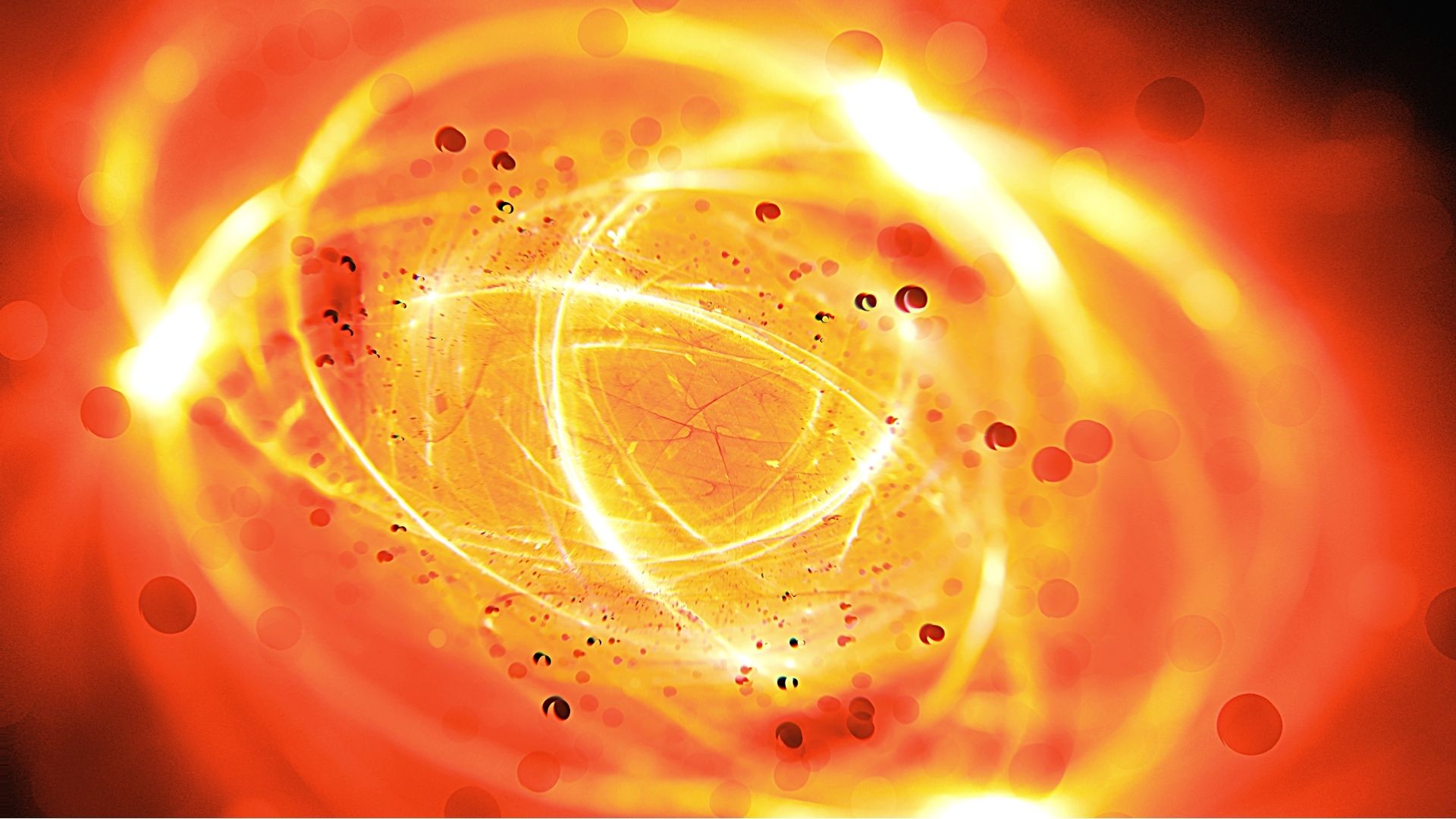
# Enhancing Fusion Effectiveness with Spin-Polarized Fuel: An Innovative Breakthrough
Researchers at the Princeton Plasma Physics Laboratory (PPPL) have achieved a remarkable advancement in the quest for feasible nuclear fusion energy. Their latest findings indicate that aligning the quantum spin of fusion fuel particles can significantly increase the efficiency of the process, particularly with deuterium and tritium, which are among the most promising fusion fuels. This innovation may lead to more compact, safer, and cost-effective fusion power plants in the future.
The research, featured in the journal *Nuclear Fusion*, illustrates that this technique of “spin polarization” not only aids energy production but also reduces the necessity for tritium, a radioactive isotope associated with safety and regulatory issues.
## Aligning Spins for Enhanced Fusion
The principle behind this breakthrough is rooted deeply in quantum mechanics. By intentionally aligning the quantum spin of particles—each possessing intrinsic angular momentum—scientists have unveiled the potential to improve the performance of fuel utilized in nuclear reactors. In a fusion reaction, two light atomic nuclei (commonly isotopes of hydrogen like deuterium and tritium) merge to create a heavier nucleus, releasing a significant amount of energy. Nonetheless, maintaining this reaction under the conditions necessary for practical energy generation is notoriously challenging.
PPPL’s research illustrates that when particles are spin-polarized—that is, when their quantum spins are oriented in a specific direction—the efficiency experiences a substantial enhancement. Specifically, the study found that the burn efficiency of tritium could rise by as much as tenfold without diminishing the traditional energy output.
“Fusion is extremely challenging, and nature doesn’t offer many advantages,” remarked Jason Parisi, physicist and lead author of the study. “Thus, the magnitude of the improvement was unexpected.”
Employing advanced computational models, the team simulated fusion reactions at different levels of spin polarization. The findings revealed that even slight polarization levels could considerably boost performance. This advancement arrives at a time when fusion researchers are concentrating on making reactors not only functional but also compact, safe, and economically viable. This progress aligns with ongoing initiatives at PPPL, where projects like the National Spherical Torus Experiment – Upgrade (NSTX-U) strive to expand design possibilities for reactors.
## Decreased Tritium Requirements and Safer Fusion Facilities
One of the most immediate advantages of spin-polarized fusion fuel is the lower quantity of tritium needed. Tritium is a radioactive hydrogen isotope that presents significant challenges in terms of expense, safety, and regulatory scrutiny. Reducing its usage results in less radioactive waste and fewer complications in management, as tritium can infiltrate and weaken reactor components over time.
“The less tritium circulating through your system, the less will enter the components,” Parisi noted. This decrease could streamline reactor engineering, minimize operational costs, and facilitate regulatory approvals for upcoming power plants.
The complexities relating to tritium have long been a concern for fusion engineers. Although deuterium, the other common fusion fuel, is abundant and non-radioactive, tritium’s role in enabling high-efficiency fusion is vital. This breakthrough in spin-polarization provides a method for sustaining efficient energy production while decreasing reliance on tritium, tackling one of the major barriers to constructing economically viable and environmentally sustainable reactors.
## Interdisciplinary Insights: Physics, Quantum Mechanics, and Engineering
The accomplishments of this research stem from a fusion (no pun intended!) of several scientific disciplines, such as plasma physics, quantum mechanics, and engineering. Central to these advancements is a deep understanding of quantum spin and its ramifications for high-energy particle interactions. The study’s interdisciplinary nature indicates a broader potential for fusion energy as a field that integrates insights from various scientific areas to overcome the numerous obstacles in realizing fusion power.
“Fusion represents one of the most multidisciplinary fields in science and engineering,” Parisi shared. “Collaboration among scientists and engineers—from computational modelers to experimental physicists—was crucial in achieving this breakthrough.”
The application of advanced computational models was instrumental in evaluating and perfecting the concept of spin-polarized fuels. These models enable the PPPL team to realistically replicate plasma conditions, revealing how spin alignment affects the complex dynamics of the reactions. Such efforts lead to scientific discoveries that propel fusion technology toward greater efficiency and viability without the substantial financial demands of initial experimental setups.
## The Prospects of Spin Polarization in Fusion Energy
While fusion energy has long been regarded as the ultimate power source—clean, almost limitless, and safe—realizing it on an industrial scale has proven to be an immense challenge. However, gradual advancements like spin polarization may open new avenues of opportunity for fusion power becoming a tangible reality.
A primary focus for future research will likely involve empirically validating the computational models and integrating this concept into current tokamak and stellarator designs.